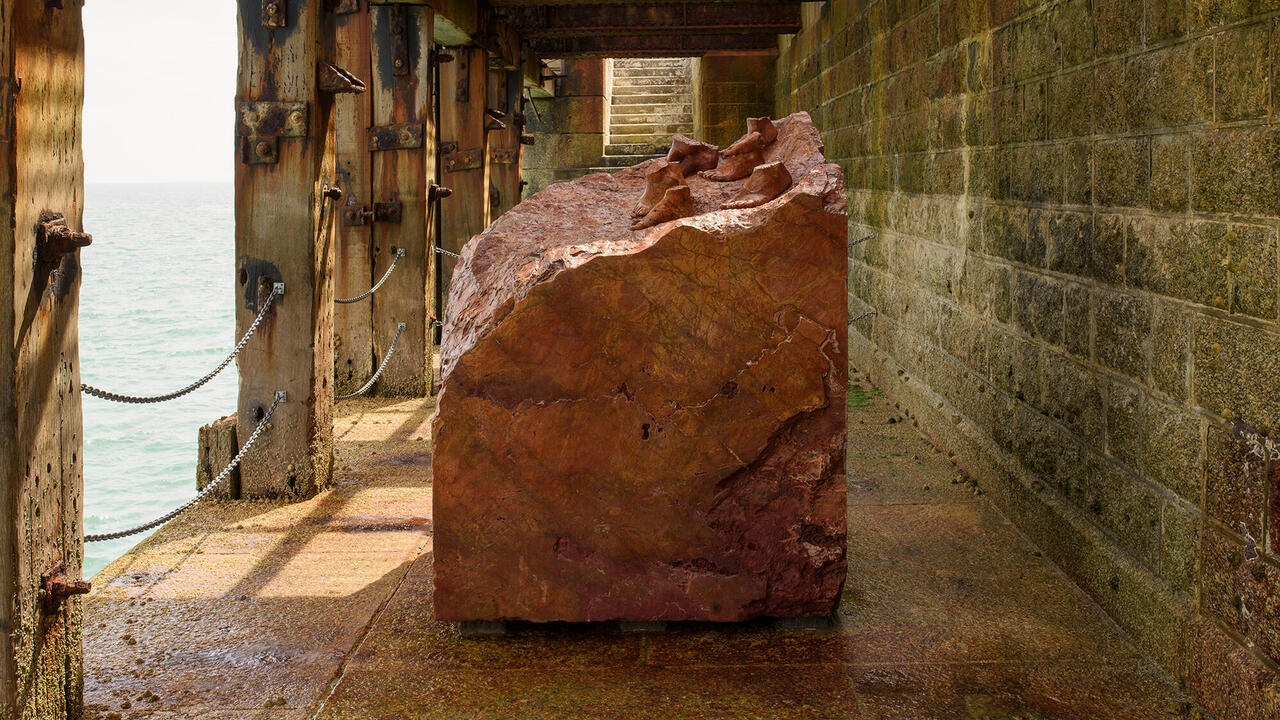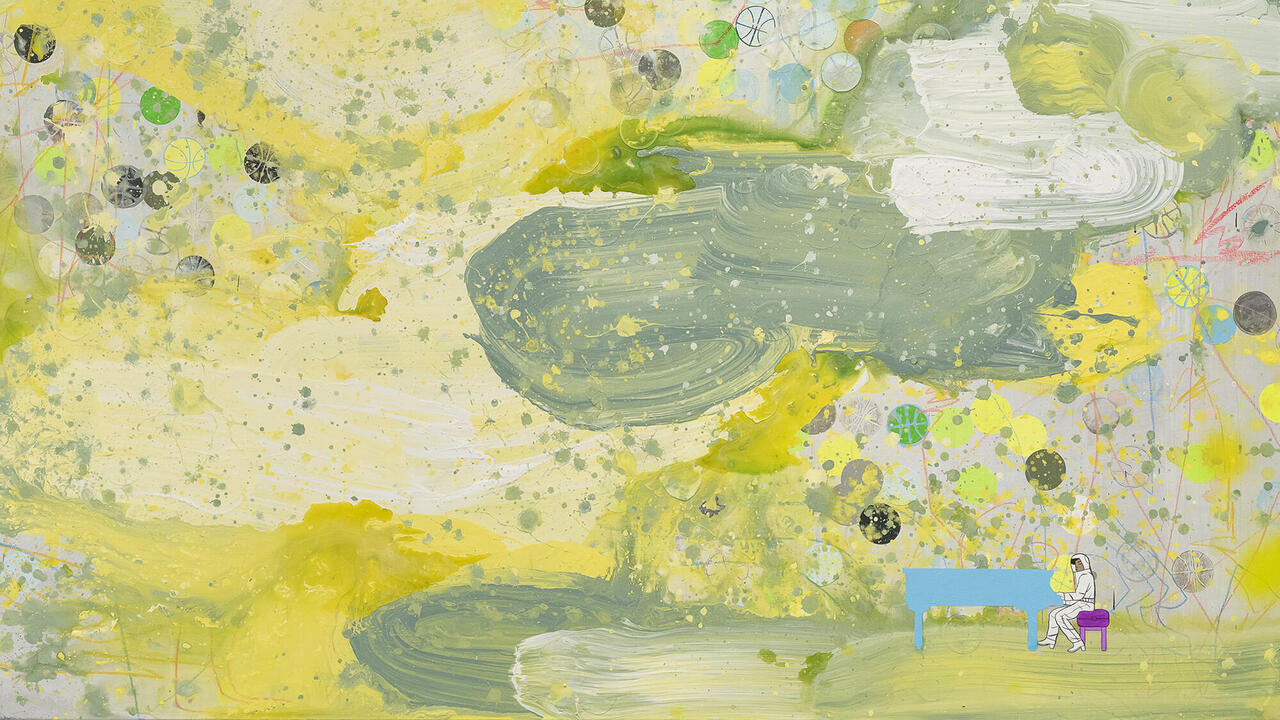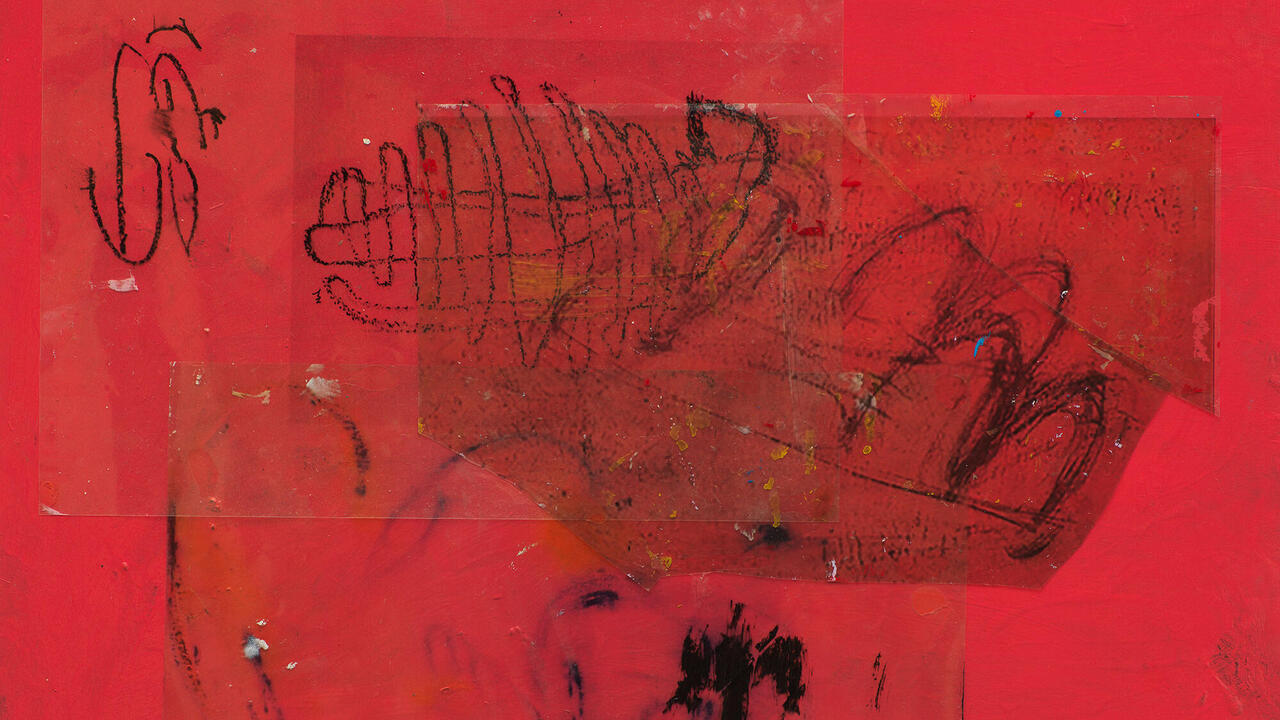Jem Perucchini Breathes Life into Old Stories
In a rich exhibition at Corvi-Mora, London, the artist draws on an eclectic set of references to reimagine cultural inheritances
In a rich exhibition at Corvi-Mora, London, the artist draws on an eclectic set of references to reimagine cultural inheritances

Painted into a speckled world of purple and orange hues, Jem Perucchini’s Black subjects are surrounded by bountiful fig trees and illuminated by the fuzzy glow of sundown; they wear diamond-shaped patterns akin to African wax prints, whilst their eyes look out with an enigmatic, avoidant gaze resembling the popular depiction of Christian saints. Perucchini’s work embodies cross-cultural exchange, with a rich constellation of artistic references, from the myths of Ancient Greece to old master paintings, converging here in colourful and fantastical compositions that feel at once oddly familiar yet entirely new.

The distinctive stippled appearance of Perucchini’s works can, from a distance, resemble the time-worn frescoes of Italian churches or the glass tiles of Byzantine mosaics. The background of Il Fiore (The Flower, 2023), for instance, is saturated with small freckles in yellow, pink, purple and black, so numerous and so tightly packed together that they look like static. The artist achieves this mottled effect by spraying an oil-based emulsion onto the canvas or linen surface, before continuing to stack layers of colour to foreground his protagonists. Perucchini also channels the gilded surfaces of altarpieces by painting his otherwise-discreet wooden frames a gleaming gold, while objects such as staffs and handheld orbs further allude to the Catholic iconography of proto- and early-renaissance works. As he propels these period aesthetics into the contemporary landscape, Perucchini populates his images with the Black and Brown bodies notably absent from the canon of Western art history.
Tragic tales of love and misfortune amidst the Greek gods and their mortal companions are revisited here, too. The myth of Orpheus – who attempted to rescue his beloved Eurydice from the underworld, only to lose her forever in his eagerness to look back at her during their return to Earth – is particularly dominant, as Perucchini reimagines such stories to probe the interdependence of creation and decay. Here, Eurydice is depicted amidst bright shades of orange and yellow (Ipomea (Eurydice), 2024), whilst the exhibition’s only sculptural piece, The Wanderer (Orfeo) (2024), portrays a life-size ceramic Orpheus holding a brass staff in one hand and a small orb, hidden behind his back, in the other. The hollow sockets of his eyes reveal his transgression, guilty of having glimpsed at Eurydice too soon.

Perucchini’s work is enriched by its many interlocking references, so it seems fitting that the show’s title, ‘Strange Fruit’, refers to yet another cultural milestone: the influential protest song of the same name, most famously performed by Billie Holiday in 1939. Written by Jewish musician and poet Abel Meeropol, possibly in response to a graphic photograph of the 1930 lynching by an Indiana mob of Thomas Shipp and Abram Smith, its eerie opening lines ring: ‘Southern trees bear strange fruit; blood on the leaves and blood at the root; Black bodies swinging in the southern breeze; strange fruit hanging from the poplar trees.’ These lines are most clearly evoked in The Fig Tree (Eros e Thanatos) (2024), where the gods of love and death appear not in a gruesome scene as sung by Holiday, but in seeming harmony at the foot of a young fig tree, said to represent fertility, abundance and the cycle of life and death.

By reimagining diverse symbols, archetypes and histories, Perucchini’s ‘Strange Fruit’ breathes life into a fertile underworld, where cultures can evolve and entwine. Informed by his experience as an Ethiopian-Italian artist, Perucchini’s work reflects our shared human desire to reshape our inheritances into our own narratives, and to forge connections with one another through seeing our old stories born anew.
Jem Perucchini’s ‘Strange Fruit’ is on view at Corvi-Mora, London, until 16 November
Main image: Jem Perucchini, Anemone (The Letter), 2024, oil and acrylic on canvas, 1.6 × 2.4 m. Courtesy: the artist and Corvi-Mora, London





















